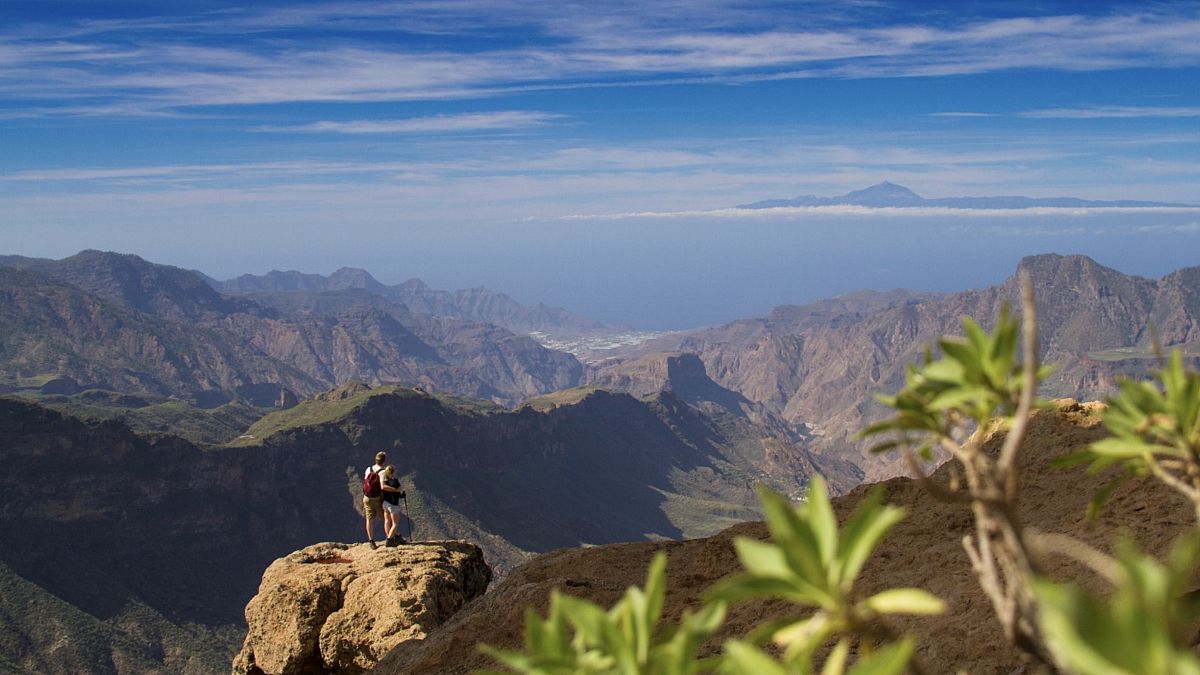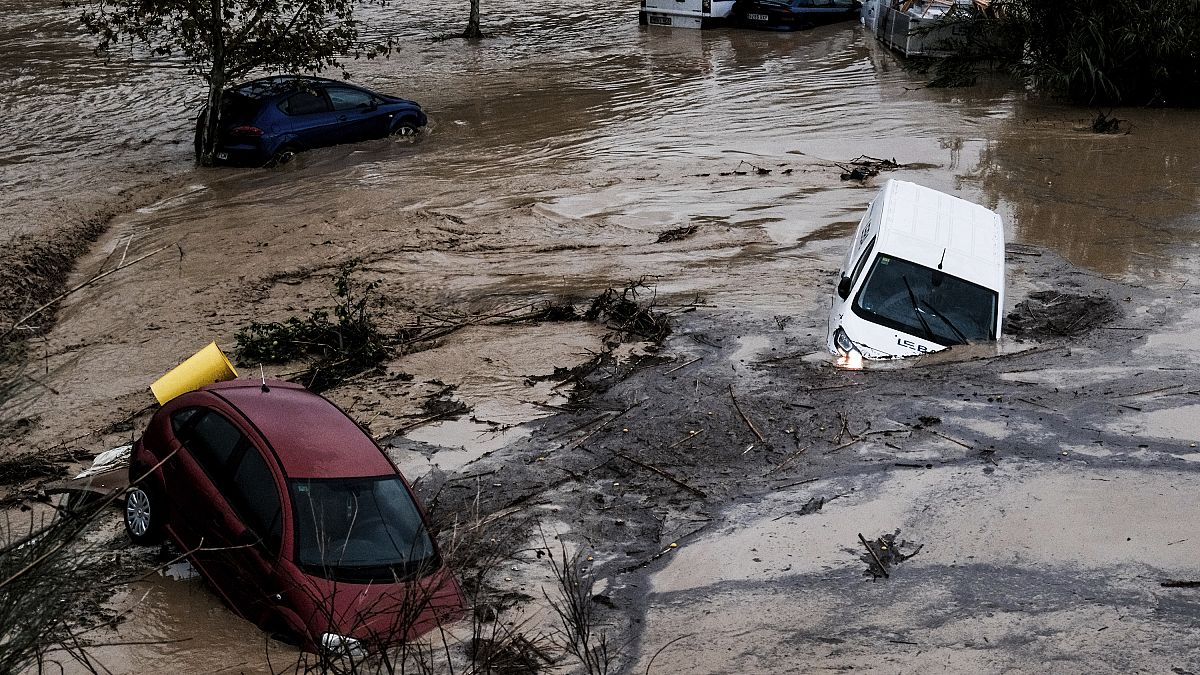Ignite your adventurous spirit in the Canary Islands

Pull your focus from the Canary Islands’ idyllic golden beaches and glittering ocean views to find an Atlantic playground catering to a full spectrum of adventure appetites.
Pick any island for a multitude of thrills, opting to trek along ancient volcanic trails in Lanzarote perhaps, or swim among the vibrant underwater kingdoms found near El Hierro’s shores.
Or, how about exploring Gran Canaria’s epic dune landscapes or La Palma’s star-studded skies? To really get away from it all, however, you might set sail to La Graciosa and immerse yourself in virgin forest and unkempt nature.
Intrepid explorers can push their limits further still in Tenerife, paragliding over the island’s stunning shoreline, or windsurfing in Fuerteventura before quieter moments of wonderment off the coast of La Gomera for whale-watching cruises and birding tours.
Island-hopping adventures
World famous for pristine beaches, laid-back Mediterranean lifestyles and year-round sunshine, the Canary Islands endless supply of adventure may come as a surprise.
Below we bring you some of the best active adventures to be had across the Canary Islands, focusing in on hiking, watersports and under-the-radar delights.
Gran Canaria: Dune landscapes and secluded beaches
Popular for its black lava and white sand beaches but with plentiful hidden gems yet to be uncovered is Gran Canaria. Home to the first Camino de Santiago outside of continental Europe and a wealth of protected nature reserves, Gran Canaria is an active traveller’s paradise, contrasting religious heritage with natural wonders.
On top of leisurely strolls through charming coastal villages, Gran Canaria is best explored on kayak and boat tours around the island’s shores, as the easy way to uncover tranquil coves and secluded beaches beyond the northern town of Gáldar or Las Marañuelas Beach off the southwest coast.
To up the ante, head inland for hiking opportunities amidst Gran Canaria’s unique volcanic landscape. Gain rewarding perspectives over the entire island on a challenging hike towards Roque Nublo, following the well-marked trails that start from its base.
Experienced climbers hoping to scale the rocky crags surrounding, including the island’s two tallest peaks, Morro de la Agujereada (1,956 metres) and Pico de las Nieves (1,949 metres), should only do so with suitable planning and equipment.
Fuerteventura: A wind-carved wonder
For cycling enthusiasts, exploring Fuerteventura on two wheels is a scenic odyssey, allowing for slow-paced rides along gentle coastal paths, connecting 150 kilometres of pristine beaches.
Alongside its beachy good looks, Fuerteventura is a year-round hub for kitesurfing, windsurfing and diving, with beginner-friendly spots such as Matas Blancas benefitting from warm weather and good winds for much of the year (peak season between March and August).
Accessible by boat from northern Fuerteventura, lies the protected Islote of Lobos, where visitors can combine culture and nature on a five-kilometre trek from the charming harbour town to Martiño lighthouse, passing amongst salt marshes and volcanic cone formations.
Hiking is another favourite pastime in Fuerteventura. Hotspots such as Islote de Lobos notwithstanding, there are many lesser-known routes to enjoy all to yourself. The six-and-a-half kilometre trail from Gran Valle to Playa de Cofete, for instance, is a great introduction to Jandía Natural Park.
Beginning at the Gran Valle viewpoint, this trail passes through wild mountain and valley terrain and down a sloping ravine towards the beautiful Cofete beach. As well as panoramic ocean views on the descent, this path also offers intrigue by way of aboriginal ruins, rare native plants and even an ancient cemetery on the water’s edge.
Other hiking trails are mapped across the island, with rewarding viewpoints over terracotta mountains, dune deserts and rugged Fuerteventura landscapes.
Tenerife: Home to Spain’s highest peak
The largest Canary Island and a sanctuary for marine life, Tenerife is a great base for wildlife-watching and diving excursions, with pilot whales, dolphins and, occasionally, orcas seen from the southwest coast.
Inland meanwhile, Teide National Park is home to a range of hiking routes for all levels, culminating in Spain’s tallest peak, Mount Teide. Journey into the park easily via the marked trail starting from Teide’s cable car station, ascending to find magnificent panoramas over the surrounding park, including geological formations such as Roques de García.
Gain more insight into local history and wildlife of Teide at El Portillo Visitors’ Centre in the Las Cañadas area, opting for alternative hikes nearby such as the Arenas Negras path which cuts through black volcanic sands.
Other trails beyond Teide include the forested mountains of Macizo de Anaga in the northeast and the cliffs and valleys of Teno Rural Park in the west.
Lanzarote: Land of fire and water
Combining martian landscapes with crystal-clear waters and a keen art scene, Lanzarote is a universal delight, characterised by charming fishing villages and beautiful beaches.
After exploring the colonial architecture and old-world atmosphere of Teguise, the volcanic attractions at Timanfaya National Park will entice, notably the Montañas del Fuego (Mountains of Fire), where ancient lava fields and bold rock formations make for otherworldly hiking and biking tours.
Guided trails cutting through the lava fields include the two-kilometre Ruta de Tremesana which can be reserved in advance at the Mancha Blanca Visitor Center (+34 928849839). Alternatively, the stunning coastal path of Ruta del Litoral can be explored freely or with a guide (also by reservation).
When the heat peaks, return to the coast for watersports and diving opportunities in crystal-clear waters. Snap underwater shots of fish living amongst the shipwrecks of Barranco del Quíquere, or Puerto del Carmen, alternatively swapping the air tank for a surfboard to ride world-class waves at Playa de Famara.
El Hierro: A tranquil getaway for divers
Rising from the sea some 1.1 million years ago, El Hierro is a young geological gem, offering world-class diving off its coast.
The coral reefs in the Marine Reserve of El Hierro, in particular, are worth gearing up for, though the island’s 39 other dive sites are equally rewarding thanks to clear waters and awesome biodiversity backed by El Hierro’s surreal underwater landscapes.
While there are few beaches in El Hierro, there are still plenty of natural ways to cool off, bathing at the turquoise Charco Azul lagoon, La Maceta natural pools upon the Valle de El Golfo coast, or at Tacorón, near La Restinga town.
Thanks to the island’s compact layout, you can also go from coast to forest in a matter of minutes. Join the locals on the three-kilometre Camino de Jinama, climbing to vantage points over the dizzying coast below.
La Palma: An extraterrestrial land of stars
Exploring La Palma is as simple as looking up at the night sky. Named a Biosphere Reserve by UNESCO for its flawless celestial views, La Palma never misses the chance to celebrate the stars.
Get an introduction to the night sky at Roque de los, the highest point on the island and the site of various starlight activities, including tours of the observatory, astronomy workshops, night hikes and night sky photography courses.
For more other-planetary scenes, hike through the lunar-like landscapes of Caldera de Taburiente National Park, an eight-kilometre crater filled with Canary pine forests and deep ravines. Follow marked trails from Los Brecitos, gaining a permit to camp beside the riverside overnight, before a visit to the iron-rich Cascada de Colores waterfall come morning.
La Gomera: the Magic Island
Just when you think you’ve seen it all, La Gomera appears on the horizon with the organ-like rock formation of Los Órganos rising from the sea in greeting.
A Biosphere Reserve, La Gomera is recognised for its slow-paced adventures and abundant natural world which covers over 30 per cent of the island’s surface. In particular, hiking in the ancestral laurel forests of Garajonay National Park is a magical experience, passing ravines, palm groves and farmland, culminating with the breathtaking view at Alto de Garajonay, the highest point in the park.
Beyond Garajonay, La Gomera has as many as 16 other Protected Natural Areas and a total of 650 kilometres of signposted trails, crossing areas such as the Benchijigua Nature Reserve in San Sebastián and the Majona Natural Park en route to Hermigua.
The conservation centre, dedicated to the protection of La Gomera’s endemic giant lizard species, is also worth a visit. On the coast meanwhile, swap your hiking boots for a life jacket, on dolphin and whale-watching excursions from Valle Gran Rey.
La Graciosa: paradisiacal escapes
One final island stop-off, just a half-hour boat ride from Lanzarote, is the virgin island of La Graciosa. The island’s tiny population, dirt roads and untouched natural world provide a unique wilderness experience, best explored by bike or on foot.
Protected as part of the Chinijo Archipelago Natural Park marine reserve, La Graciosa serves as a refuge for marine and bird life, with calm and clear waters that make the island a perfect choice for diving and birding, sighting everything from spiny lobsters and groupers to white-faced petrel colonies and Eleonora’s falcons.
Pedal between each of La Graciosa’s powder-soft beaches, breaking for sunbathing, snorkelling and more watersports amidst dreamy volcanic landscapes both above and below the water.
For open water diving, La Burrera is a highlight, while the island’s four main hiking trails provide plenty still to do on land, such as the seven-kilometre coastal path between El Salado and Playa de la Cocina, with rewarding sunset vistas atop Montaña Amarilla.
Respecting the island’s environment
The Canary Islands’ captivating landscapes are a product of their unique location, shaped by volcanic eruptions and a subtropical climate. This unique climate fosters a rich ecosystem of plant and animal life, with endemic species found nowhere else on Earth.
As a responsible adventurer, it is crucial to tread lightly and respect this delicate ecosystem. Opt for eco-friendly tours and activities that minimise environmental impact and choose designated hiking and cycling paths to avoid disturbing the natural habitat.
By being a mindful visitor, you can help ensure that the Canary Islands’ beauty remains pristine for generations to come.
By venturing beyond the typical tourist hotspots, you’ll soon see that the Canary Islands offer much more than sun, sand and sea. Explore the interplay of culture and nature on invigorating island escapes for an experience that will leave you longing for more.
Planning your trip to the Canaries
The best time to visit the Canary Islands depends on the type of activity you’re interested in. Some activities such as windsurfing and trekking are better suited for certain times of the year due to weather conditions.
For further information on planning your Canary Island adventure, visit HelloCanaryIslands.com.
Source: Euro News















